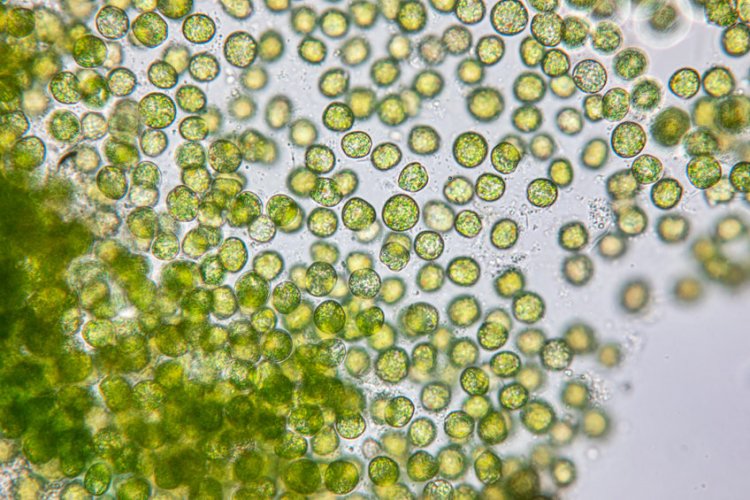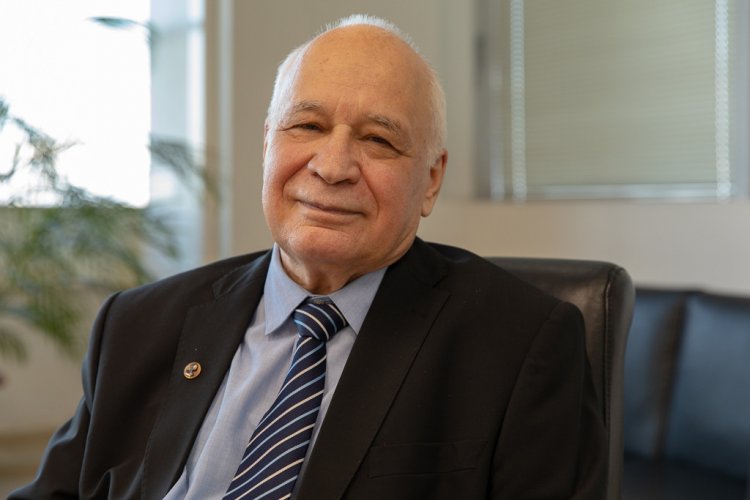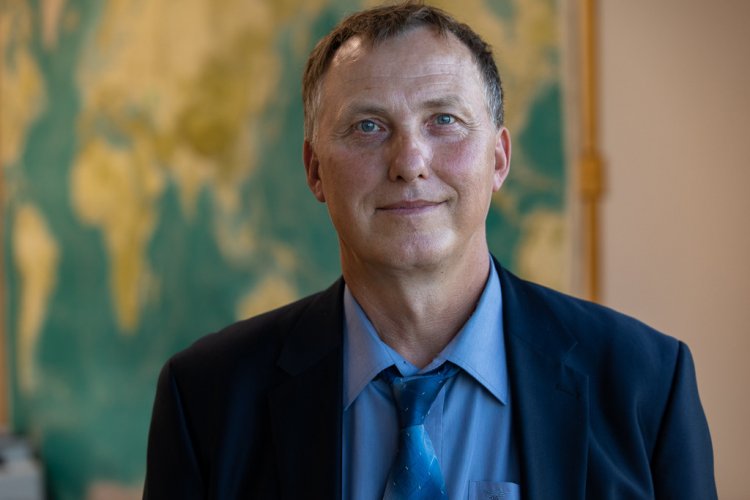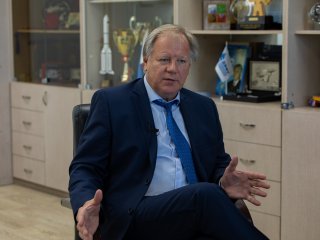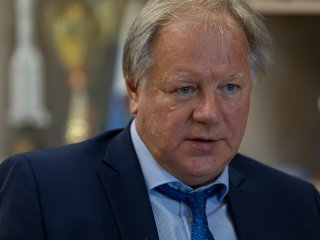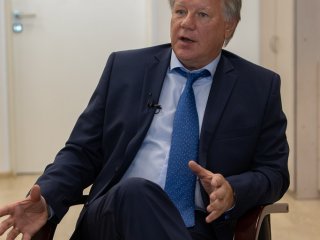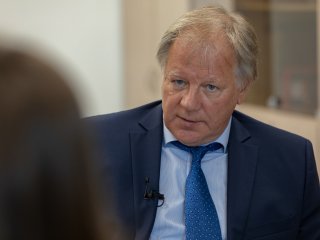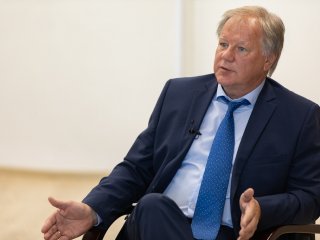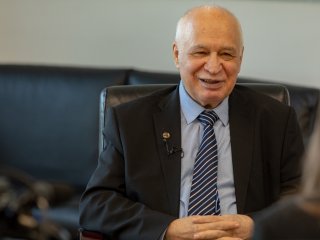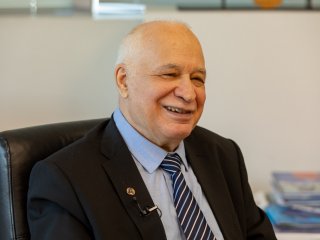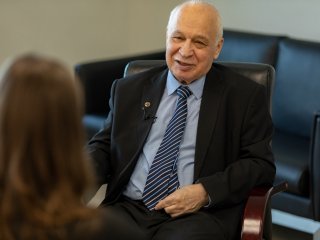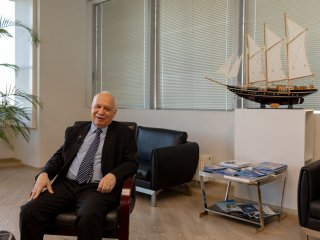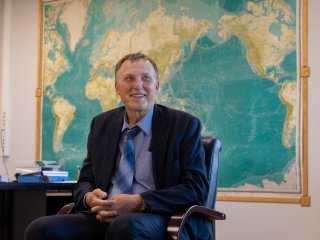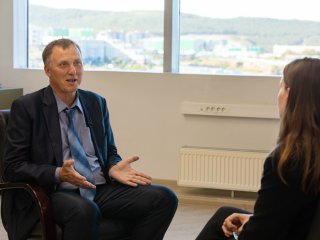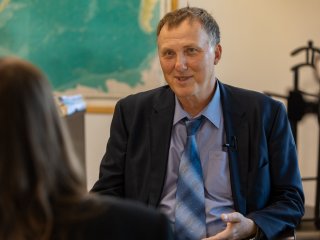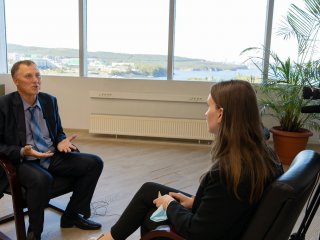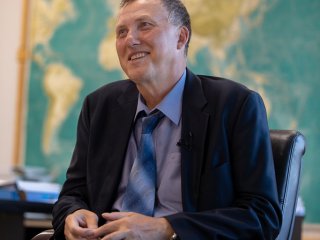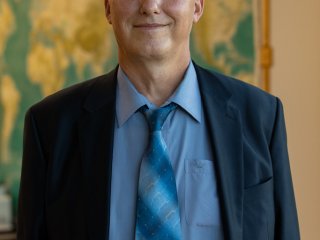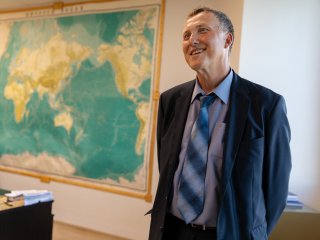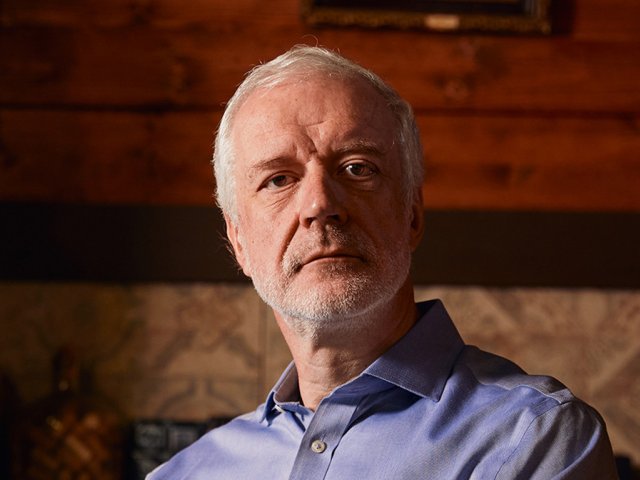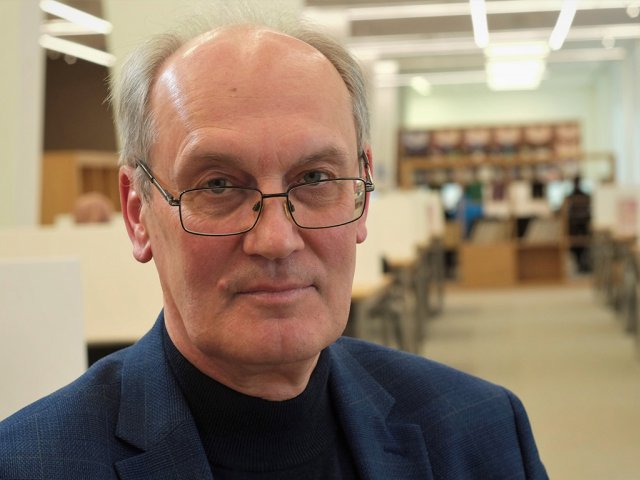The Russian Far East is a storehouse of the country’s natural resources. Marine organisms and unique flora objects with unusual chemical composition and biological activity attract the attention of scientists around the world. After all, natural compounds can become a source of new medicinal and preventive drugs. This is especially important today when humanity continues to fight against the novel coronavirus infection.
For 60 years, the G.B. Elyakov Pacific Institute of Bioorganic Chemistry has been researching natural compounds for medicine and pharmacology. It was founded in 1964 by Georgy Borisovich Elyakov, who remained the permanent director of the institute until 2001. Georgy Borisovich managed to create a strong scientific school for the study of natural compounds isolated from marine organisms and plants of the Ussuri taiga. Under his leadership and the guidance of the second director, Academician Valentin Aronovich Stonik (who headed the institute for 17 years), the PIBOC FEB RAS scientists established the structure of several hundred previously unknown substances that became the basis for the development of biological products for medicine, the food industry, and agriculture. And in the Far East, a new industry, unique for Russia, has appeared: the production of biochemical reagents and medications from marine biological raw materials. Today, Elyakov’s legacy is carefully preserved by his students and employees of the institute.
Pavel Sergeevich Dmitrenok, the director of the G.B. Elyakov Pacific Institute of Bioorganic Chemistry of the Russian Academy of Sciences
“PIBOC FEB RAS has accumulated extensive experience in searching for the sources of physiologically active compounds – that is, marine and terrestrial organisms. We use proven technology, special algorithms that are used in scientific expeditions. Divers and deep-sea trawls help extract raw materials. But sometimes it is enough just to collect material on the shore, in the so-called littoral zones. Specialists mark the organisms found, then filter out the excess and catalog the selected specimens,” Pavel Sergeevich Dmitrenok, the current, third director of the institute (since 2018), told our portal.
Today, the organic synthesis of natural compounds, bioorganic chemistry, molecular immunology, and marine microbiology are studied at the PIBOC FEB RAS. The institute employees study unique terrestrial plants of the Far East and the ocean’s marine organisms. The latter are particularly interesting.
Marine organisms are valuable as a source of new natural compounds that differ from the substances that are obtained from terrestrial organisms. And we are talking not only about the chemical structure but also about the specifics of biological action. By studying marine organisms, scientists managed to obtain about 40 thousand natural marine compounds.
“If we consider the World Ocean as a kind of plant for the production of potential medicines, then the study of marine organisms has allowed us to create, for example, a new generation of antitumor drugs. Some of them have wonderful properties. At the same time, this field is developing rapidly, and even more interesting drugs are appearing,” notes Valentin Aronovich Stonik, Doctor of Chemical Sciences, Member of the Russian Academy of Sciences, Scientific Director of the G.B. Elyakov Pacific Institute of Bioorganic Chemistry of the Russian Academy of Sciences.
Valentin Aronovich Stonik, Scientific Director of the G.B. Elyakov Pacific Institute of Bioorganic Chemistry of the Russian Academy of Sciences
“But in addition to marine organisms, there are marine microorganisms. The scientists began to study them relatively recently. They differ from their terrestrial counterparts, and, therefore, they have their own chemistry and their own, for example, antibiotics. We (Associated Member of the RAS V. V. Mikhailov and his students) have been collecting marine microorganisms since the 1980s. Today this collection has 5 thousand axenic strains of bacteria and fungi. Of these, 200 strains have been discovered at our institute. And the first bacteria genera found in our country today, for example, already contain 20 or 30 species.”
To predict the biological activity of a new compound, scientists are studying the mechanisms of its biological action at the cellular and subcellular levels. Modern molecular and cellular biology methods help the institute specialists in this.
But before obtaining a new biologically active compound for a future drug, it is necessary to find the organisms that have unique properties. At PIBOC, the Akademik Oparin – a research vessel that recently completed the 64th expedition – is responsible for that. This time, the research was conducted in the waters of the Sea of Japan. The expedition participants took 64 microbiological samples from the sea soil and from marine animals to isolate marine bacteria and fungi. Half of the samples were taken from depths over 200 meters. For the traditional analysis of marine invertebrates, the scientists collected some samples of sea sponges, ascidia, echinoderms, and other marine life.
The search for active compounds is a technical matter. Today, the world’s largest biotope, that is, the habitat is in the ocean bed at a depth of 1 to 5 thousand meters. A real universe underwater that has yet to be explored.
“In addition to sea expeditions, the institute’s employees also conduct ground search operations. Here we work with the unique flora of Primorsky Krai. Academician Pyotr Grigoryevich Gorovoy is engaged in this area. Despite his age, he annually participates in expeditions, where together with colleagues and students he studies the region’s plants and their properties. Many therapeutic compositions created at the institute are made up of its collections. Of course, this topic is not so relevant compared to the study of marine organisms, because the latter is less studied. We can say that it was PIBOC that at one time became one of the first domestic institutions to work seriously in this direction. Today, we know hundreds of new compounds and even classes of compounds. But we are also actively returning to terrestrial species because there is a huge potential here that has not been evaluated yet,” notes Dmitrenok.
The new chemical compounds found in the expeditions have a pronounced physiological effect on the living organisms, including humans. By studying their properties, specialists create unique drugs for the treatment of various diseases. In particular, the PIBOC employees have created a whole series of new domestic medicines. Their list includes Histochrome for Ophthalmology and Histochrome for Cardiology.
Histochrome belongs to antioxidant drugs. It can stabilize cell membranes, as well as interact with active oxygen forms. Today, it is indispensable in treating the diseases of the retina and cornea of the eye, glaucoma, injuries, and burns of the visual organs. And recently, scientists have discovered another important property of Histochrome.
“In science, a new use of a drug is usually called repositioning. There is a high probability that our drug can be used as a means of rehabilitation for COVID-19. It also has an antiviral effect, but most importantly – it effectively restores various tissues, including the lung tissue,” emphasizes Valentin Aronovich Stonik. “However, the repositioning process is long and expensive. First of all, because it is necessary to re-conduct clinical trials. Now our drug has been put in line. And the person who is responsible for the selection of candidate drugs told us that Histochrome is unlikely to be among the first. But we would really like it to be checked as soon as possible since we know exactly its properties.” According to the institute’s scientific director, Histochrome is created based on a flat sea urchin (inedible). It is popularly called the “sand dollar,” because its shape resembles a coin. “Fortunately, it sits in the sand for a whole year, and only in September-October it gets to the surface, and at this time it can be collected. Among other things, the PIBOC specialists breed flat sea urchins in aquariums. When the young grow up, we plant them in the ground around our marine station, and thereby support the population. In addition, we have learned how to obtain the drug synthetically.”
Sergey Ivanovich Maslennikov, Senior Researcher at the National Scientific Center of Marine Biology, Head of the Center for Aquaculture and Coastal Bioresources
The scientists from the A.V. Zhirmunsky National Scientific Center of Marine Biology FEB RAS help their colleagues from PIBOC breed sea urchins. In addition, the scientists from the Center of Marine Biology determine the marine organisms found in the expeditions. “This is the most important thing. After all, if we find an organism that carries some active biological substances, it is necessary to know exactly what kind of organism it is. And to find it again, you need to know the species,” explains Sergey Ivanovich Maslennikov, Senior Researcher at the National Scientific Center of Marine Biology, Head of the Center for Aquaculture and Coastal Bioresources. “Our cooperation began with the project of the artificial production of a sea urchin that carries histochromes – the important components of some drugs. As a rule, the urchin is extracted in the natural environment, which is quite expensive and, most importantly, not predictable. A planned approach was required because we were talking about a drug that saves lives. On a meeting with the PIBOC employees, I proposed to create a center that would deal with the sea urchin reproduction. More than 20 years have passed since then. At the Pacific Institute of Bioorganic Chemistry, they learned how to reproduce the sea urchin. Active cooperation with Chinese and Korean scientists has begun. Right now, joint research is being conducted with Japanese colleagues. That is, a lot of water has flown under the bridge since then, but it has not flown in vain. This water has been enriched with a lot of experience and skills.”
Today, PIBOC FEB RAS and other leading institutes of the region continue to develop the areas that are important for medicine. However, it is obvious that without the support of the state and the business sector, our country will not be able to compete with other market leaders. The institute director noted that at the Eastern Economic Forum in September, the PIBOC representatives signed several important agreements with the representatives of large domestic companies. “Thus, the institute will cooperate with Arnica, which is known for the development of innovations in the production of vitamins for agriculture, in the field of creating new solutions and bio-products for agriculture. And the Antey Group of Companies is interested in the processing of secondary raw materials. Such financial support for the business of a scientific institute’s pilot plant to produce drugs is very rare. It is a real success for us that we have found mutual understanding and points of joint development.”
Pavel Dmitrenok talks about the scientific directions of the institute
Academician of the Russian Academy of Sciences Valentin Aronovich Stonik talks about the useful resources of the ocean and medicines based on biologically active substances
Senior Researcher at the National Research Center for Marine Biology Sergey Maslennikov talks about the technologies for growing marine organisms
